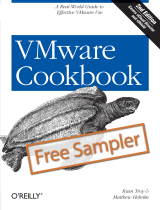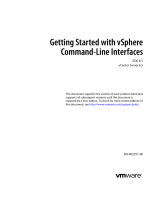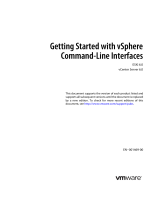VMware vSphere settings
18 Dell EMC PowerVault ME4 Series and VMware vSphere | 3922-BP-VM
6.2 Recommended multipathing (MPIO) settings
Block storage (iSCSI, FC, or SAS to vSphere hosts from the ME4 Series array) has the native path selection
policy (PSP) of most recently used (MRU) applied by default. If the vSphere hosts are connected to the ME4
Series array through SAN fabrics that follow the best practices as described in section 3, Connectivity
considerations, multiple paths will be presented to each volume. Half of the paths go to the active controller
that owns storage pool from which the volume is created, and the remaining paths go to the passive failover
or alternative controller. Since the ME4 Series array is ALUA compliant, and recognized as such by vSphere
ESXi, I/O will be correctly routed to the owning or active controller.
With MRU, only one of the two or four paths to the active controller is transporting I/O, with the remaining
path(s) only transporting I/O if current path fails. Changing the PSP to round robin (RR) enables the I/O
workload to be distributed across all the available paths to the active controller, resulting in better bandwidth
optimization. It is recommended to use round robin for SAN-attached volumes.
In addition to changing the PSP to round robin, it is also recommended to change the default number of I/Os
between switching paths. The default setting waits until 1,000 I/Os have been sent before switching to the
next available path. This may not fully utilize the entire available bandwidth to the SAN when multiple paths
are available. It is recommended to change the default number of I/Os between switching paths from 1,000 to
3, as described in the following subsections.
Note: In direct-attached configurations, such as SAS and direct-attached Fibre Chanel, there are typically
only two connections, one to each controller, and therefore two paths. In such a configuration, with only one
path to the active or owning controller, round robin has no benefit over MRU.
Applying these setting to all the datastores mounted to all the ESXi hosts in a vSphere environment can be
achieved in different way, of which two examples are shown in the following subsections.
6.2.1 Modify SATP claim rule
Modifying the SATP claim rule is advantageous because it will apply to all current and future datastores that
are added to the ESXi host, but it requires a reboot to be applied. Once the rule is created and a reboot
occurs, all current, and future datastores will have the recommended setting applied to them.
To automatically set multipathing to round robin, and set the IOPS path change condition for all current and
future volumes mapped to an ESXi host, create a claim rule with the following command:
esxcli storage nmp satp rule add --vendor "DellEMC" --satp "VMW_SATP_ALUA" --psp
"VMW_PSP_RR" --psp-option "iops=3" --claim-option="tpgs_on"
SATP claim rules cannot be edited; they can only be added or removed. To make changes to an SATP claim
rule, it must be removed and then re-added. To remove the claim rule, issue the following command:
esxcli storage nmp satp rule remove --vendor "DellEMC" --satp "VMW_SATP_ALUA" --
psp "VMW_PSP_RR" --psp-option "iops=3" --claim-option="tpgs_on"
A reboot is required for claim rule changes to take effect.
6.2.2 Modify multipathing setting
The PSP can be changed from MRU to round robin using the VMware vSphere Web client for each existing
datastore. However, this can become unwieldy if there are many existing new datastores needing to be


























